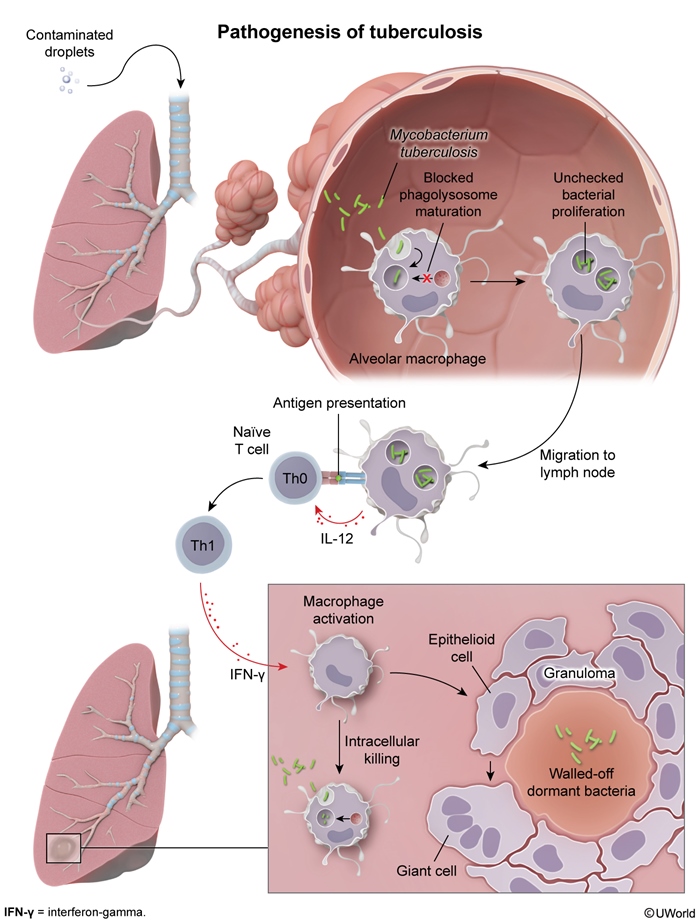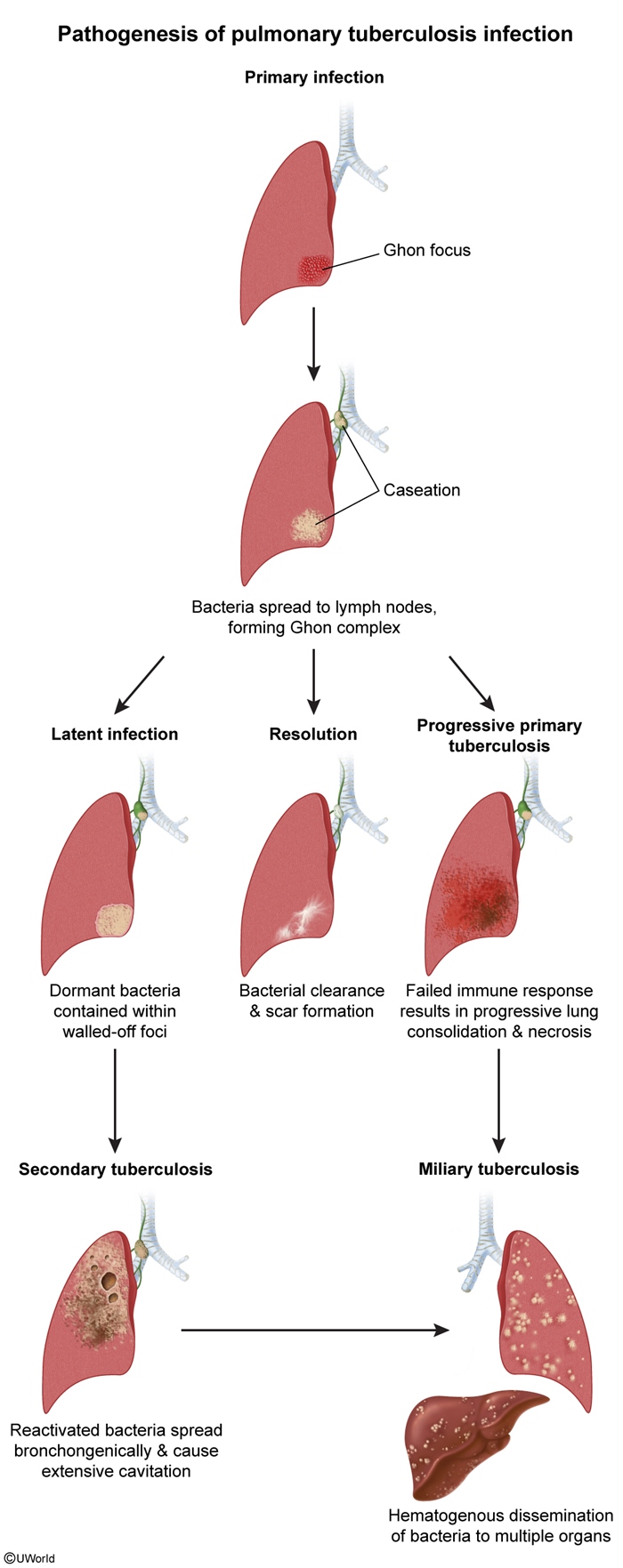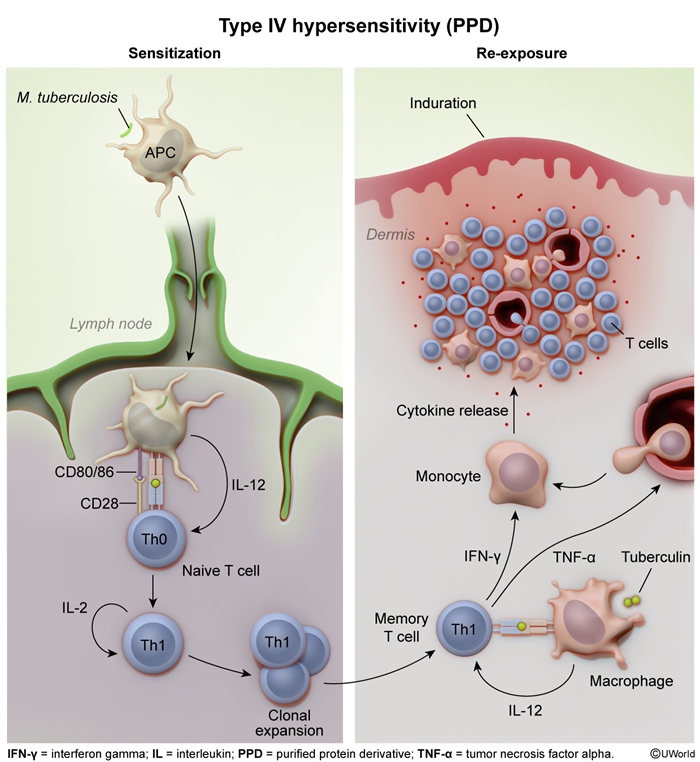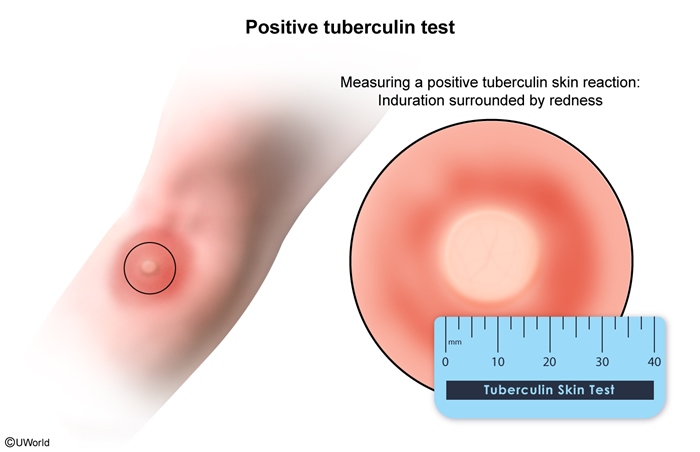Tuberculosis
Article Sections
Introduction
Tuberculosis (TB) is a highly prevalent disease, affecting one-quarter of the world population. TB incidence is falling very gradually, and it remains the leading infectious cause of death across the globe. This article discusses latent TB infection and active TB disease, encompassing primary, reactivation, and disseminated TB.
Microbiology
Mycobacterium tuberculosis is a gram-positive bacillus with a unique waxy cell wall rich in mycolic acids and lipids that makes it resistant to innate host defenses and many conventional disinfectants. TB bacilli are transmitted through airborne droplets, leading to initial infection and intracellular replication within alveolar macrophages (Figure 1). M tuberculosis has several virulence factors that aid its survival (eg, cord factor inhibits phagolysosomal fusion). Persistent replication within macrophages induces granuloma formation, which serves as a barrier to contain the infection but also provides shelter for
Continue Learning with UWorld
Get the full Tuberculosis article plus rich visuals, real-world cases, and in-depth insights from medical experts, all available through the UWorld Medical Library.
Figures



Images
